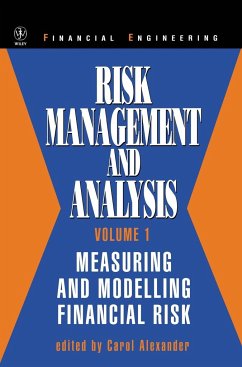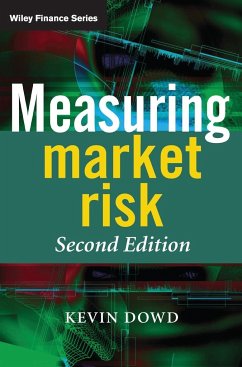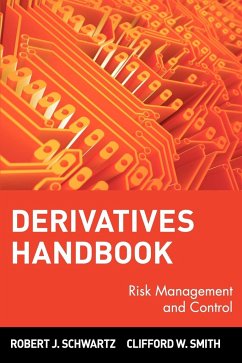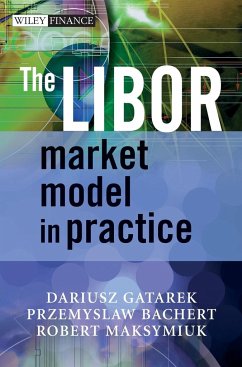
Risk and Financial Management
Mathematical and Computational Methods

PAYBACK Punkte
68 °P sammeln!
Since the groundbreaking work of Nobel Laureates Markowitz, Black, Scholes and Merton, mathematics has emerged as the leading discipline to address fundamental questions in finance. After the success of the pricing theories in the early nineties, risk management is attracting a great deal of attention in the academic community, triggering its increasing protagonism in the banking as well as in the insurance and utility industry.
This book provides an accessible and practical introduction to the basic elements of financial risk management, mathematics and computational finance for both students and traders. Too often students learn techniques and analyses without assessing the dependence of such analyses on the definition of "uncertainty" and the meaning of "probability." Likewise many traders use the mathematical and computational techniques without understanding the underlying theory. Thus this book attempts to clarify some of the issues confronting theory and practice and explain some of the "fundamental-mathematical" issues that underpin the theory of finance.
This book provides an accessible and practical introduction to the basic elements of financial risk management, mathematics and computational finance for both students and traders. Too often students learn techniques and analyses without assessing the dependence of such analyses on the definition of "uncertainty" and the meaning of "probability." Likewise many traders use the mathematical and computational techniques without understanding the underlying theory. Thus this book attempts to clarify some of the issues confronting theory and practice and explain some of the "fundamental-mathematical" issues that underpin the theory of finance.
Financial risk management has become a popular practice amongst financial institutions to protect against the adverse effects of uncertainty caused by fluctuations in interest rates, exchange rates, commodity prices, and equity prices. New financial instruments and mathematical techniques are continuously developed and introduced in financial practice. These techniques are being used by an increasing number of firms, traders and financial risk managers across various industries. Risk and Financial Management: Mathematical and Computational Methods confronts the many issues and controversies, and explains the fundamental concepts that underpin financial risk management.
_ Provides a comprehensive introduction to the core topics of risk and financial management.
_ Adopts a pragmatic approach, focused on computational, rather than just theoretical, methods.
_ Bridges the gap between theory and practice in financial risk management
_ Includes coverage of utility theory, probability, options and derivatives, stochastic volatility and value at risk.
_ Suitable for students of risk, mathematical finance, and financial risk management, and finance practitioners.
_ Includes extensive reference lists, applications and suggestions for further reading.
Risk and Financial Management: Mathematical and Computational Methods is ideally suited to both students of mathematical finance with little background in economics and finance, and students of financial risk management, as well as finance practitioners requiring a clearer understanding of the mathematical and computational methods they use every day. It combines the required level of rigor, to support the theoretical developments, with a practical flavour through many examples and applications.
_ Provides a comprehensive introduction to the core topics of risk and financial management.
_ Adopts a pragmatic approach, focused on computational, rather than just theoretical, methods.
_ Bridges the gap between theory and practice in financial risk management
_ Includes coverage of utility theory, probability, options and derivatives, stochastic volatility and value at risk.
_ Suitable for students of risk, mathematical finance, and financial risk management, and finance practitioners.
_ Includes extensive reference lists, applications and suggestions for further reading.
Risk and Financial Management: Mathematical and Computational Methods is ideally suited to both students of mathematical finance with little background in economics and finance, and students of financial risk management, as well as finance practitioners requiring a clearer understanding of the mathematical and computational methods they use every day. It combines the required level of rigor, to support the theoretical developments, with a practical flavour through many examples and applications.














